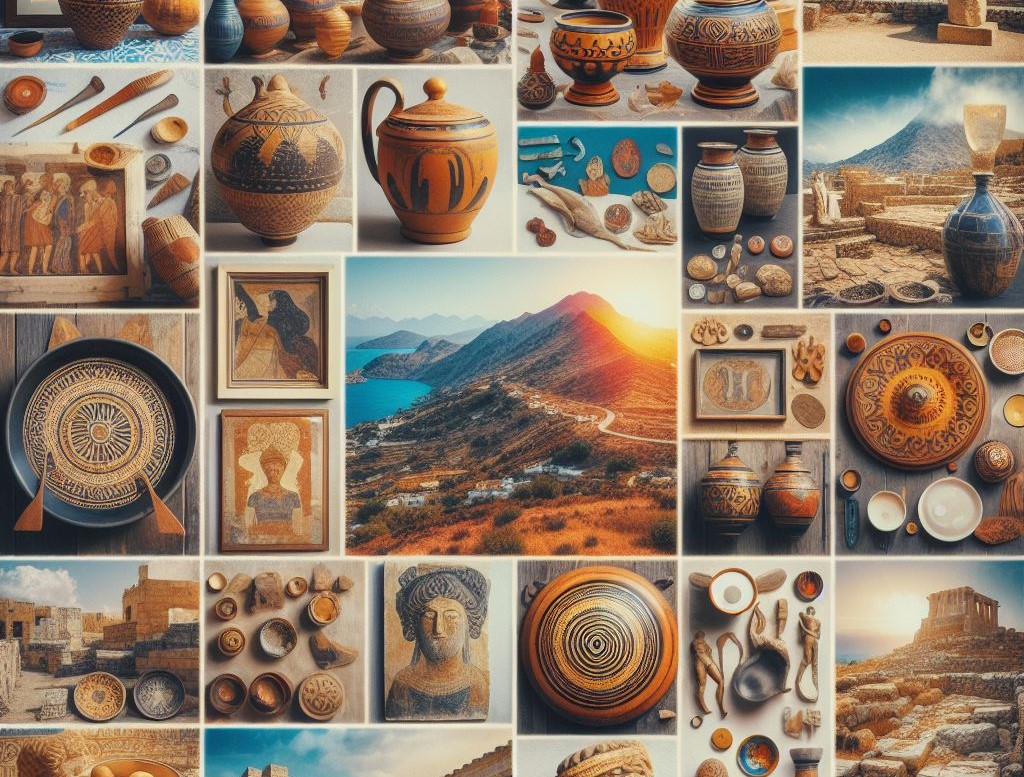
Crete, the largest island in Greece, is not only renowned for its breathtaking landscapes and pristine beaches but also for its rich cultural heritage dating back thousands of years. From ancient civilizations to modern-day traditions, the island offers a fascinating glimpse into the past and present of Greek civilization. Join us as we delve into Crete’s cultural tapestry, exploring its ancient civilizations, archaeological treasures, museums, and enduring traditions.
1. Ancient Civilizations: Crete is steeped in history, with evidence of human habitation dating back to the Neolithic era. However, it was the Minoan civilization, Europe’s first advanced society, that flourished on the island from around 2700 to 1420 BCE. The Palace of Knossos, near Heraklion, is one of the most iconic archaeological sites on the island, offering insight into the Minoan culture, architecture, and daily life. Other significant Minoan sites include Phaistos, Malia, and Zakros, each providing a glimpse into the island’s ancient past.
2. Archaeological Marvels: Crete is home to a wealth of archaeological marvels that bear witness to its rich history and cultural heritage. From ancient palaces and tombs to Byzantine churches and Venetian fortresses, the island’s landscape is dotted with treasures waiting to be discovered. Explore the ruins of the ancient city of Gortyna, marvel at the intricate frescoes of Agia Triada, and wander through the labyrinthine streets of Rethymno’s Old Town to uncover the layers of history that define Crete.
3. Museums: Crete boasts a diverse array of museums dedicated to preserving and showcasing its cultural heritage. The Heraklion Archaeological Museum is home to the world’s most extensive collection of Minoan artifacts, including pottery, sculptures, and frescoes from sites across the island. The Historical Museum of Crete offers insight into the island’s more recent history, from the Byzantine era to the modern-day, while the Natural History Museum of Crete explores the region’s geological and ecological diversity.
4. Traditions: Despite its rich history, Crete is also a place where ancient traditions and customs continue to thrive. From traditional music and dance to culinary traditions and religious festivals, the island’s cultural heritage is alive and well. Experience the vibrant atmosphere of a Cretan village festival, where locals gather to celebrate with music, dancing, and feasting. Sample authentic Cretan cuisine, such as dakos (rusk topped with tomatoes, olive oil, and cheese) or souvlaki (grilled meat skewers), and immerse yourself in the warm hospitality and timeless traditions of the island.
Conclusion: Crete’s cultural heritage is a testament to the island’s rich and diverse history, spanning millennia of human civilization. From the ancient ruins of the Minoans to the vibrant traditions of modern-day Cretans, the island offers a captivating journey through time and culture. Whether exploring archaeological sites, museums, or experiencing local traditions firsthand, visitors to Crete are sure to be enchanted by the island’s cultural tapestry and timeless charm.
